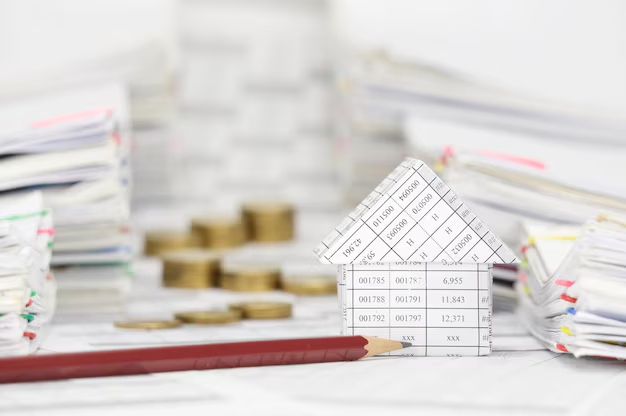Understanding Today's HELOC Rates: What You Need to Know
When looking for flexible borrowing options, a Home Equity Line of Credit (HELOC) often stands out. But before diving into this financial avenue, it's essential to understand the current HELOC rates and how they impact your financial planning. This guide explores HELOC rates comprehensively, offering insights that empower you to make informed decisions.
🔍 What Exactly is a HELOC?
A HELOC is like a credit card backed by your home's equity. It allows you to borrow money as needed, paying interest only on the amount you draw. This makes HELOCs appealing for managing expenses such as home improvements, emergency funds, or consolidating higher-interest debts.
How Does a HELOC Work?
- Credit Limit: Tied to your home's value and equity.
- Draw and Repayment Periods: Typically includes a draw period (5-10 years) where you can borrow, followed by a repayment period (10-20 years) where the outstanding balance must be paid off.
- Variable Interest Rates: Rates fluctuate with the market, influenced by the prime rate.
🔄 Factors Affecting HELOC Rates
HELOC rates are subject to change due to various financial dynamics. Here are key factors influencing these rates:
Economic Indicators
- Prime Rate: The HELOC rates closely follow the prime rate, adjusted in response to economic shifts.
- Federal Reserve Policies: Interest rates often reflect decisions made by the Federal Reserve, which aims to stabilize the economy.
Lender-Specific Criteria
- Credit Score: Higher credit scores usually receive better HELOC rates.
- Loan-to-Value Ratio: A lower ratio can attract favorable terms.
Market Competition
- Lender Competition: Banks and credit unions may offer competitive rates to attract more consumers.
📉 Current Trends in HELOC Rates
Understanding the landscape of today's HELOC rates can enhance your financial strategy. Generally, HELOC rates have shown the following trends:
Rise and Fall Patterns
- Economic Recovery: Post-recession recoveries often see a gradual increase in rates as the economy stabilizes.
- Consumer Behavior: Increased demand for home equity borrowing can sometimes lead to competitive rate offers.
Geographic Variances
Rates can vary significantly based on the location, with some areas offering more competitive rates due to local economic conditions.
🏘️ Comparing HELOCs with Other Loan Options
It’s crucial to compare HELOCs with other financial products to determine the best fit for your needs.
HELOC vs. Home Equity Loan
- Flexibility: HELOCs offer revolving credit, whereas home equity loans are typically a lump sum.
- Interest Rates: HELOCs generally have variable rates; home equity loans often have fixed rates.
HELOC vs. Personal Loan
- Interest Costs: HELOCs generally offer lower interest rates compared to unsecured personal loans.
- Creditworthiness: HELOC approval depends significantly on home equity.
🛠️ Practical Tips for Navigating HELOC Rates
Navigating the HELOC landscape involves smart planning. Here are some tips for securing favorable terms:
- Monitor the Prime Rate: Keep an eye on changes to predict potential rate fluctuations.
- Improve Credit Scores: A higher credit score can lead to better interest rates.
- Shop Around: Compare offers from different financial institutions.
- Negotiate Terms: Engage lenders about lowering margin rates above the prime rate.
📊 Summarized Insights for Quick Reference
Here’s a quick glance at essential tips and insights for understanding and leveraging HELOCs:
| 📌 Tip | 🌟 Description |
|---|---|
| ✨ Monitor Economic Changes | Keep an eye on Federal Reserve announcements. |
| ✨ Boost Credit Score | Aim for a high credit score for better rates. |
| ✨ Compare Lenders | Shop around to find the most competitive HELOC rates. |
| ✨ Understand Terms | Know the difference between draw and repayment periods. |
Navigating Your Financial Future with a HELOC
Making informed decisions requires understanding the intricacies of HELOCs and their rates. Whether considering them for financial flexibility or strategic investments, knowing how current economic trends and personal financial health impact your borrowing is key. By staying vigilant and prepared, you can navigate the HELOC landscape with confidence, aligning it seamlessly with your goals and lifestyle.

Related Topics
- Are Heloc Loans Good
- Are Heloc Rates Fixed
- Are Heloc Rates Going Down
- Are Helocs a Good Idea
- Are Helocs Tax Deductible
- Are Student Loans Considered As Debt When Getting a Heloc
- Are Student Loans Considered As Debts When Getting a Heloc
- Are Student Loans Considered When Getting a Heloc
- Are Student Loans Considered When Getting a Heloc In Illino
- Are Student Loans Considered When Getting a Heloc In Illinois